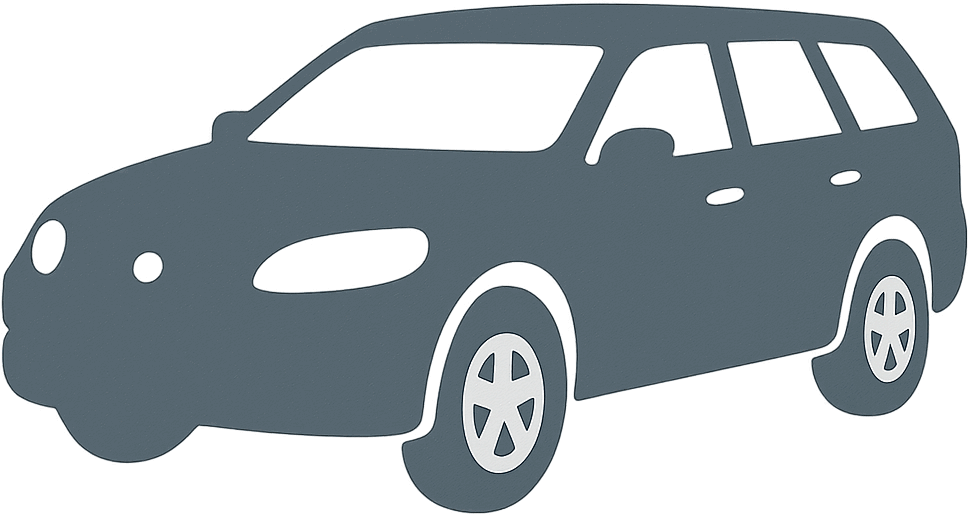 1967 Moskvich 427 Dimensions, Size & Specs
1967 Moskvich 427 Dimensions, Size & Specs
Measurements of the 1967 Moskvich 427, engineered for optimal performance and comfort
| Dimensions | |
|---|---|
| Length: | 4090 mm161.0 in13.4 ft |
| Width: | 1550 mm61.0 in5.1 ft |
| Height: | 1485 mm58.5 in4.9 ft |
| Weight Specifications | |
| Curb Weight: | 1065 kg2348 lbs |
| Tire Specifications | |
| Tire Size: |
|
The Moskvich 427 is a distinctive station wagon produced between 1967 and 1975, representing a classic example of Soviet automotive design from that era. Measuring 4090 mm (161.0 inches) in length, 1550 mm (61.0 inches) in width, and 1485 mm (58.5 inches) in height, this vehicle offers compact dimensions typical of family and utility station wagons of the late 1960s. With a curb weight of 1065 kg (2348 lbs), the Moskvich 427 balances a relatively light structure with practical size suitable for city driving and moderate cargo capacity. Its tire size of 165/80 R13 highlights the period's preference for modestly sized wheels enhancing ride comfort and maneuverability. The vehicle’s design is oriented towards utility and functionality, providing space for both passengers and luggage within a compact footprint. The Moskvich 427 is a notable model for enthusiasts interested in Soviet-era cars, famous for its straightforward engineering and robust build. Whether used for daily commuting or carrying goods, it remains an interesting study in automotive size and engineering efficiency of its time.
Discover the standout features that make the 1967 Moskvich 427 a leader in its class
Have a question? Please check our knowledgebase first.
The Moskvich 427 station wagon produced between 1967 and 1975 measures 4090 mm (161 inches) in length, 1550 mm (61 inches) in width, and 1485 mm (58.5 inches) in height. These dimensions offer a compact and practical footprint typical of station wagons during that era, balancing interior space and maneuverability.
The Moskvich 427 has a curb weight of approximately 1065 kg (2348 lbs). This moderate weight for a station wagon of its time supports stable handling characteristics. Its lighter weight compared to larger family wagons enhances fuel efficiency and agility in urban driving conditions but may reduce stability at high speeds.
The Moskvich 427 uses tires sized 165/80 R13. These 13-inch wheels with a fairly high profile tire (80 aspect ratio) contribute to a comfortable ride by absorbing road imperfections, which complements the car's suspension setup designed for everyday driving on varying road surfaces.
Yes, the Moskvich 427 fits comfortably into a standard garage. With dimensions of 4090 mm (161 in) length and 1550 mm (61 in) width, it is smaller than many modern cars, ensuring ample clearance inside typical garages that usually accommodate cars up to around 5 meters (16.4 feet) in length and 2.5 meters (8.2 feet) in width.
Compared to its predecessor (Moskvich 423), the Moskvich 427 maintains a similar compact family station wagon footprint but with subtle improvements in dimensions to enhance passenger comfort and cargo capacity. It preserved the manageable width and height while slightly optimizing length for better interior space utilization, making it more practical for family use without significantly impacting urban drivability.
The Moskvich 427 offers a practical and modest interior space typical for compact station wagons from the late 1960s. While its external dimensions (4090 mm length and 1550 mm width) are somewhat smaller than some Western contemporaries, it efficiently uses space, providing adequate passenger room and a versatile cargo area suitable for family and utility tasks common during the period.
With a height of 1485 mm (58.5 inches), the Moskvich 427 offers reasonable headroom for passengers, balancing comfort and the wagon’s aerodynamics. The relatively moderate height keeps the center of gravity low, enhancing handling stability while the shape helps reduce air resistance compared to taller vehicles, improving fuel economy modestly.
The Moskvich 427's design as a station wagon focuses on maximizing cargo versatility. Its wagon body style allows for expandable cargo space by folding rear seats, making it well suited for carrying luggage, groceries, or equipment. While exact cargo volume figures aren't typically documented, its compact dimensions provide sufficient space for typical family needs while maintaining ease of parking and maneuvering.
At 1550 mm (61 inches) wide, the Moskvich 427 is narrower than many modern cars, making it highly maneuverable in tight city streets and narrow parking spaces. This narrow width was common for compact cars from the Soviet era, favoring practical urban use where road widths and parking availability can be limited.
Internationally, the Moskvich 427 is comparable in size and weight to compact European and Japanese station wagons from the late 1960s. With a length of 4090 mm (161 inches) and curb weight of 1065 kg (2348 lbs), it is smaller and lighter than some family wagons like the Ford Cortina Estate or VW Variant, reflecting different automotive standards and consumer demands in the Soviet Union emphasizing simplicity and efficiency.
Discover similar sized cars.

| Production: | 1969-1975 |
|---|---|
| Model Year: | 1968 |
| Length: | 4090 mm161.0 in |
| Width: | 1550 mm61.0 in |
| Height: | 1500 mm59.1 in |
